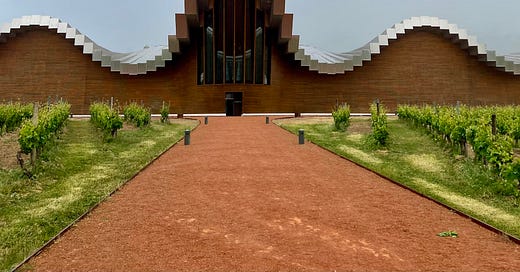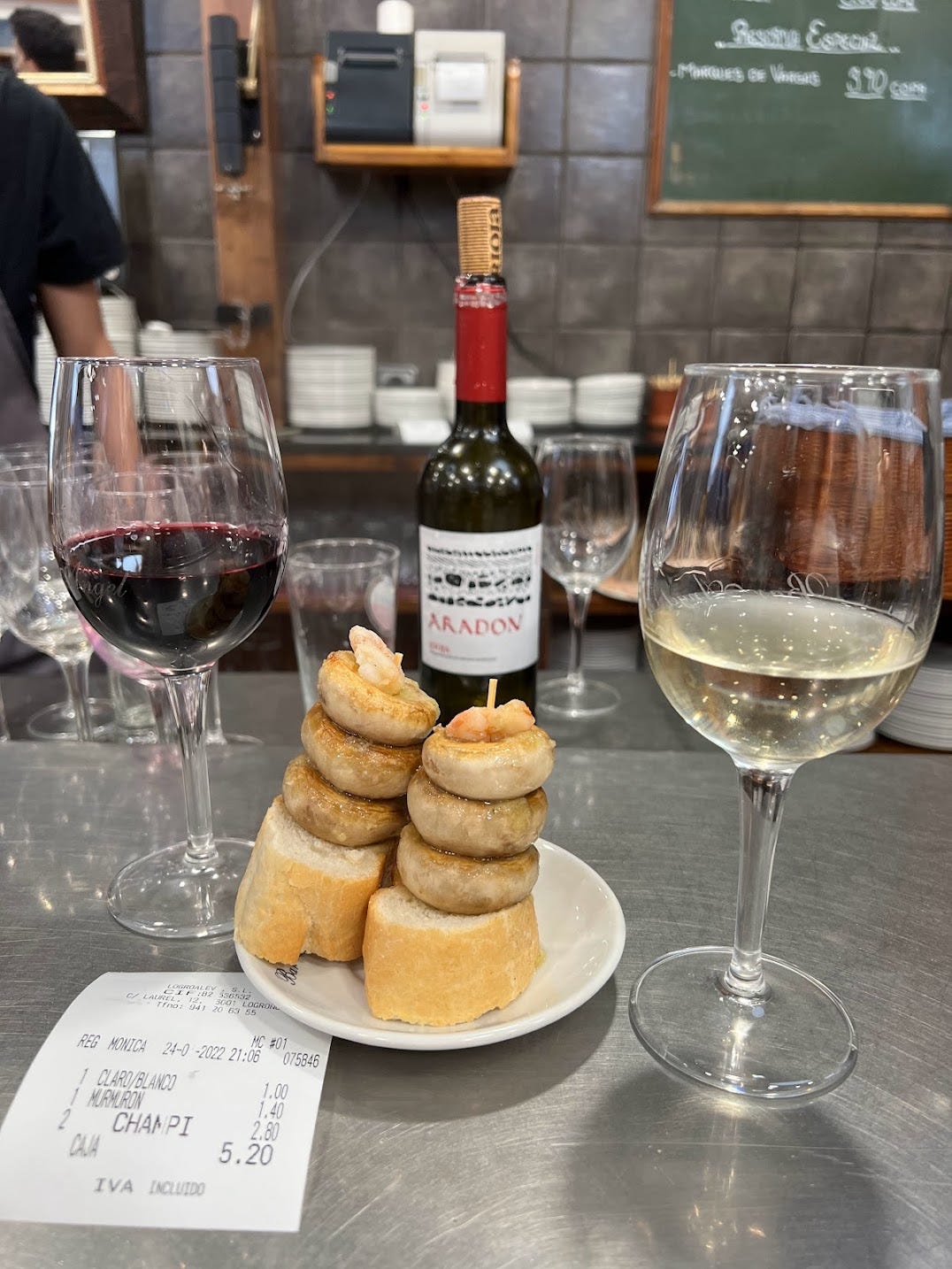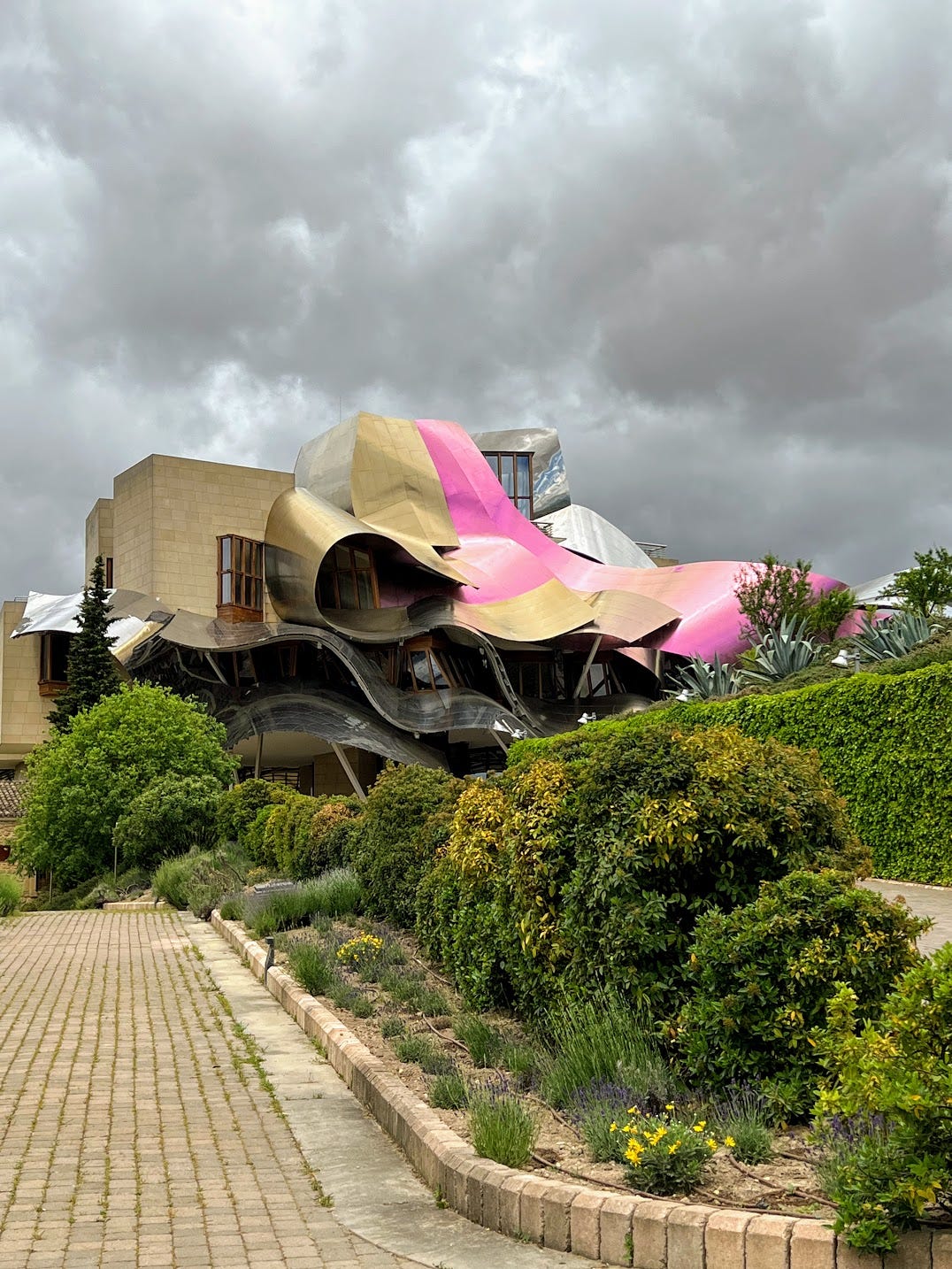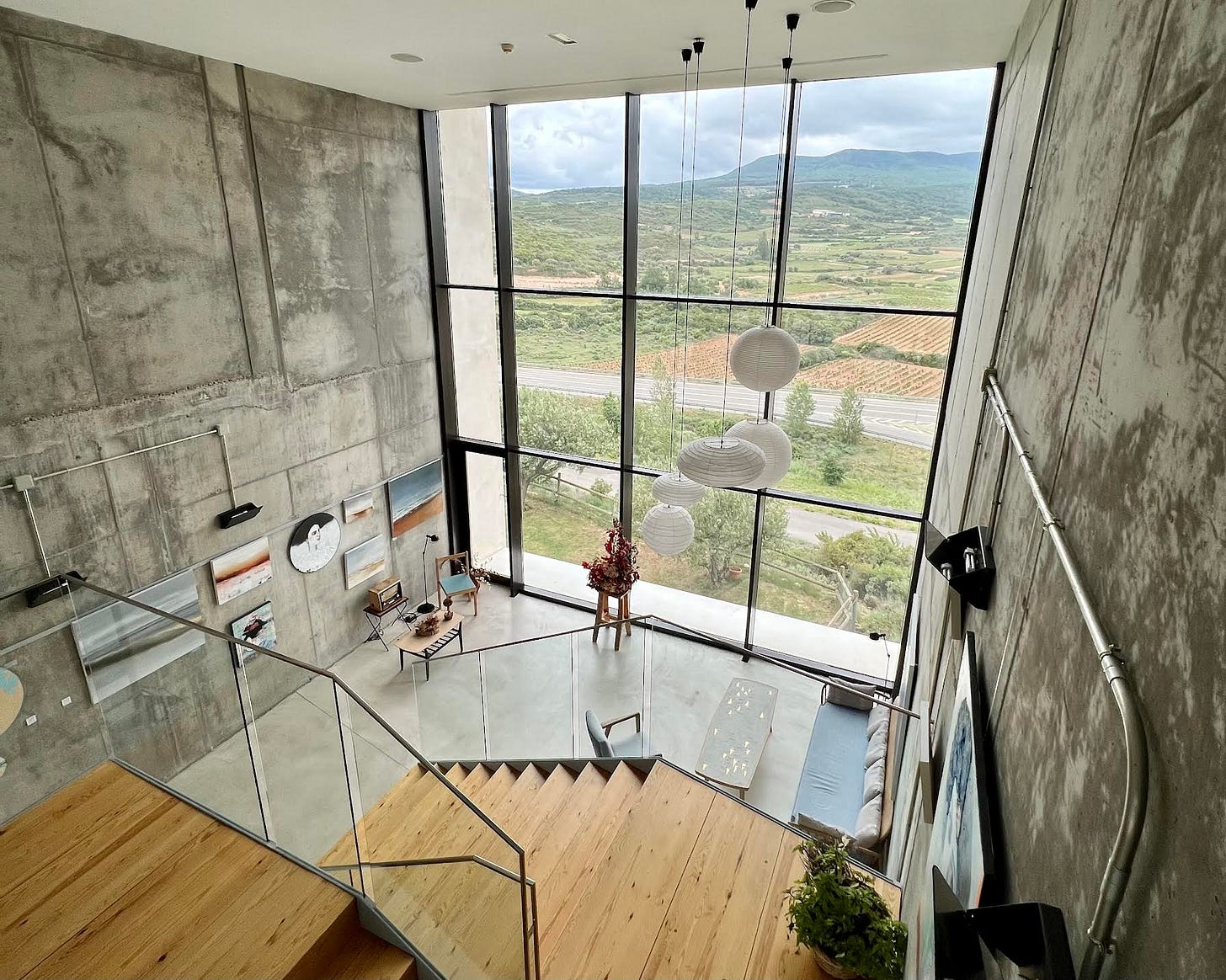48 hours in La Rioja
If you're a oenophile and love vast greenery and staggering mountain views, this part of Northern Spain is for you.
How de we feel about Sunday updates? It’s a nice day to read about places and plan travel, isn’t it? Or go to bottomless brunch and then book a flight while tipsy? Today is Tuesday, but I’ve scheduled some stories to go out Sundays for the next couple months — stories I’ve written for publications like Vice, or Thrillist or Travel + Leisure or the Daily Beast, because they might feel old to me, but most likely they’re new to you.
Now on to the third place I visited during my most recent Spanish/Basque adventure: La Rioja. Everything about it felt super special. The climate. The people. The terroir.
But first things first. HIRE A DRIVER if you’re planning this trip. For the entire time you’re here. It’ll be so much easier having a guy just waiting for you outside each location ready to get you to the next. The taxi system is a little strange here in that there aren’t drivers everywhere so depending on where they’re coming from they’ll charge you the round trip instead of just one way so it adds up fast. Second: do this region as a group trip (girls’ trip, couples trip, family trip, whatever) because it makes more sense to hire a driver, etc. when it’s four or more of you.
Some villages to explore while you’re in La Rioja: Logroño is the capital and where we spent an evening pintxo hopping, Entrena is where we stayed, Haro is where the train station is — it’s all a bit spread out. Laguardia has its own little quiet, historic downtown and it’s also where you’ll find a lot of the wineries.
Eat and Drink
In researching what we should do I found this couple’s blog which was super helpful for our only night out in Logroño. It is written in Spanish, but it’s much more extensive than my list and worth peeking at when planning your trip to La Rioja. We took a taxi from Entrena to Logroño our first night in La Rioja around 6pm. I recommend erring on the earlier side to take full advantage as establishments do seem to close earlier here. The two main streets for pintxos in Logroño are Calle Laurel and Calle San Juan. Even if you know nothing and do zero research, just get dropped off here and I promise it’ll be a success. Wander from bar to lively bar where it seems there are more locals than tourists (or at least more Spaniards than Americans).
Three pintxos bars we loved: La Taberna de Laurel for patatas and txakoli, Bar Angel for mushrooms and — you guessed it — txakoli and the oldest bar in Logroño, Blanco y Negro, for sweet and savory bruschettas and Ribera del Duero. Please peep the food and drink prices in the photo above. One euro for a glass of wine — I’ll never feel OK about paying $20 a glass again, but I’m sure I’ll continue to do it.
Wineries and Tasting Rooms
In Spain, “bodega” means winery, and there are over 600 bodegas in La Rioja. I am not the authority on this since we didn’t really have time to check out too many, but if you go anywhere PLEASE visit Bodegas Ysios. Designed by Santiago Calatrava, the architecture is futuristic-looking and absolutely stunning. Clara Canals is the winemaker and you know I love seeing women thriving in a male-dominated industry more than anything. You can read more about Canals in Bazaar here (it’s in Spanish).
Learned a lot at Bodega Ysios, here are some things that stood out to me:
The best vines grow from the poorest soil and the best grapes are produced under stress (vines focus on survival and when there’s grass as well there’s competition)
Ecological techniques used here include controlling production in advance with sheep
In this region there are three unique terroirs (influenced by Mediterranean climate on one side, Atlantic on the other)
Each collection here produces 1,500-2,000 bottles per year
In the 1900s, phylloxera (an insect pest) destroyed many vineyards in the region
Those that survived throughout Europe all have the same sandy soil today
One bottle here specifically is harvested grano a grano or berry by berry (it’s on a Top 10 list of best wines in Spain) by employees and their families, kids and all
They produced 600 bottles and sold out in three months — this varietal won a double Platinum Decanter award and the label has a fingerprint on it to represent the personal touch left by everyone who helped make it
The wines here are made in four windows and three fermentation cycles. There is a beautiful 28-meter wall-to-wall barrel room and the building is shaped in a way that allows natural light to come in, but never direct sun. All French oak barrels are used here (made by 16 barrel makers, 10 who are local to Spain and six are French). Humidity in the space is always controlled at 85% and although the same winemaking process takes place time and time again, they will taste a little different year after year depending on the climate and other natural factors. Book a tour in Spanish or English, which is about an hour and a half and culminates in a wine tasting with snacks in a tasting room that overlooks the vineyard. It will take your breath away.
Wanted to include Eguren Ugarte winery in the list because it was highly recommended by a friend, although I didn’t have time to stop in. It’s a hotel AND family winery, like many bodegas in the area.
Grab a bite at Marqués de Riscal. I’d say skip the wine tour and do lunch in the restaurant instead. This is a Frank Gehry-designed hotel and pretty recognizable architecturally; food was delicious and one of our only sit down meals the entire trip. The hotel also has a Caudalie spa that offers Vinothérapie® treatments. Really wanted book a spa treatment here, but also didn’t really plan ahead.
Stay
Finca de Los Arandinos in Entrena was just perfect. I found this on Expedia and the price was great for three people; when I let them know it would only be two of us, they gave us an even better rate. Rooms are all white and airy and overlook the vineyard. Each room has a balcony here, but come prepared for cold temps and wind. We did not.
“Continental” breakfast is included in your reservation — and it’s always better in Europe than in the US. Think fresh OJ and lattes made to order, pain de chocolat, fruits, cheeses, jamon Serrano and more. We didn’t really do dinner at the hotel, just room service but at the on-site restaurant, TIERRA, you can indulge in anything from a mini menu ($) to the tasting menu ($$$) and all include wine. Visit the winery or just carve out some time to sample wines made on property while lounging on the lobby level — it overlooks the vineyard as well and has a gorgeous, minimal design (pictured above).
Book an hour at the spa to experience the Turkish Steam Bath, Dry Finnish Sauna and more. There’s a terrace here with vineyard views where you can curl up with a book if it’s sunny.
We were lucky to book last-minute massages at the spa, though I would recommend booking ahead because the massage therapist is only on property for appointments. Ours was Ivone and I will definitely be reaching out next time I’m in La Rioja whether I stay at Los Arandinos or not. Her fingers are magical and she was able to work out the worst knots and soreness brought on by different beds, heavy bags and lugging suitcases from train station to train station. You can book her here or through the hotel.
More to do and see
It’s really too big/spread out here, there’s A LOT to see here in just 48 hours and without a guide or a dedicated driver it’s tricky. Vivanco is a wine museum that was recommended to us a couple times…
The Monasteries of San Millán Yuso and Suso are both registered as UNESCO World Heritage Sites due to their historical importance. We wanted to visit, but it was a little out of the way. I would also look into outdoor adventures for next time like horseback riding, hot air balloon excursions and hiking.
If you take a bus from La Rioja to San Sebastián, pay attention to the size and amount of trees on the route. It’s like a fairy tale. Stunning. Striking. Increíble.








